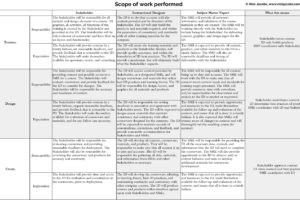One of the most jarring things I have ever experienced was sitting through an eight-hour training with seven slide decks that used 22 fonts, varying width canvases, no discernible color palette coupled with bizarre backgrounds, and so many transitions and motions I thought I was watching a Disney action animation. I left having no idea what the class was about, what was being trained, or even what the trainer looked like. It was stunning. I was exhausted and yet I didn’t accomplish anything.
How could I be exhausted if I didn’t learn anything? I was just sitting there experiencing something akin to a PowerPoint bad acid trip – how tiring is that?
One thing that we tend to forget about when delivering training is that braining is just as tiresome as moving bricks. To expand on that analogy, having to brain and train is just as tiresome, if not more so, than moving different sized, shaped, and weighted bricks.
I am an adamant advocate for creating consistency in training. In many places I have worked I have caught some blowback for being an evangelist about consistency in training materials and the need for templates. The problem is, most people associate a drive for consistency with having to wield control, templates with a lack of creativity, and a consistent look with boring and lifeless. This is completely and utterly untrue.
I push for consistency for three distinct reasons, but I am only going to discuss one here. The three are:
- Continuity of content between lessons and modules
- Accountability of what is being trained by the trainers
- Heuristics and ease of learning
I am only going to address heuristics in this article.
That eight-hour course of bad acid trippy presentation taught me nothing because there was a constant inconsistency between the modules. Where the “designer” thought they were being creative and breaking up the material, they were actually forcing the learner to have to relearn how to learn the material. This requires brain power to determine where they are in the learning and what means what when they are presented with visual queues. Our brains naturally look for shortcuts to understand what we are seeing, so if every slide or lesson presents something different than what we expect, our minds either go into instant analysis overdrive or they just shut down. Neither are conducive to learning.
Heuristics are those shortcuts. We hear about them mostly in the realms of unconscious and cognitive bias, but they play a lot of roles in our day-to-day lives that enable us to function, act more predictively, but more so, respond to new situations more effectively. Heuristics are little mental shortcuts that we develop that, in a world with little to no change, free up cognitive power to do more intense thinking or deeper analysis of what we are experiencing.
For instance – the drive to work. The first few times you drive to work, you are mentally aware of everything because you are learning a new path. You slowly get to the point where you understand that at certain times of the day, the traffic flows a certain way and you use it to your advantage. After awhile, you are driving to and from work without any thought about it, often times not even remembering the drive because you were thinking about other things. You have developed heuristics through observation, exposure to stimuli, and motor skills that enable you to perform mundane tasks without processing constantly.
If, on your drive to work, there is road construction or an accident that diverts you to a new route, suddenly you are aware of your presence, the surrounding environment, and new stimuli. If you were talking on the phone on your regular route, you would have an easy conversation without any consideration of your drive (which is dangerous, by the way, so don’t do this!). Now, you are on the phone and you have a new route you have never taken before – you can’t keep up with the conversation because you are processing multiple new stimuli while executing new motor behaviors, all at the same time you are supposed to be processing the conversation of this phone call. Your heuristics have been shattered and you are learning new information.
Now, put this in the classroom. If you start an eight hour course (or any course with multiple lessons or modules), your last slide should use the same style, structure, design rules, fonts, etc., as your first slide. The first few slides that present information set the roadmap – “when you see this, it means that.” You should use the same font and size for every header, and nowhere else. You should use the same color pallet throughout the slide deck. You should use colors that are complementary to the company colors (there are useful web-based engines that can show you that, like Adobe’s color wheel). The first slide that explains an activity should look the same as the last slide that explains an activity, content slides should be the same design, etc.
“But that will be BORING!” or “That isn’t CREATIVE!” some would say.
No, no it doesn’t have to be boring. It is what you make of it. What is important is that you develop subtle triggers in your presentation materials that allow the learner to develop a heuristic of what is expected of them. When you create these subtle heuristics, learning is more likely to occur because they aren’t trying to figure out what the new pathway is – what the expectation for their interaction is.
The creativity comes from how the material is presented, the activities, the engagement of the trainer, imagery used in the training materials – the list goes on. Creating greatly disparate slide decks with fancy animations and bizarre backgrounds or colors isn’t creativity, it’s confusion.
Developing consistency between training materials is developing heuristics that enable the learner to lift the same bricks, of the same weight and size, while also discovering the balance point to lighten their load. They will be more engaged and less mentally tired, but they will also have a greater likelihood of remembering the content presented. At the very least, they won’t feel a hangover from a bad PowerPoint acid trip.





